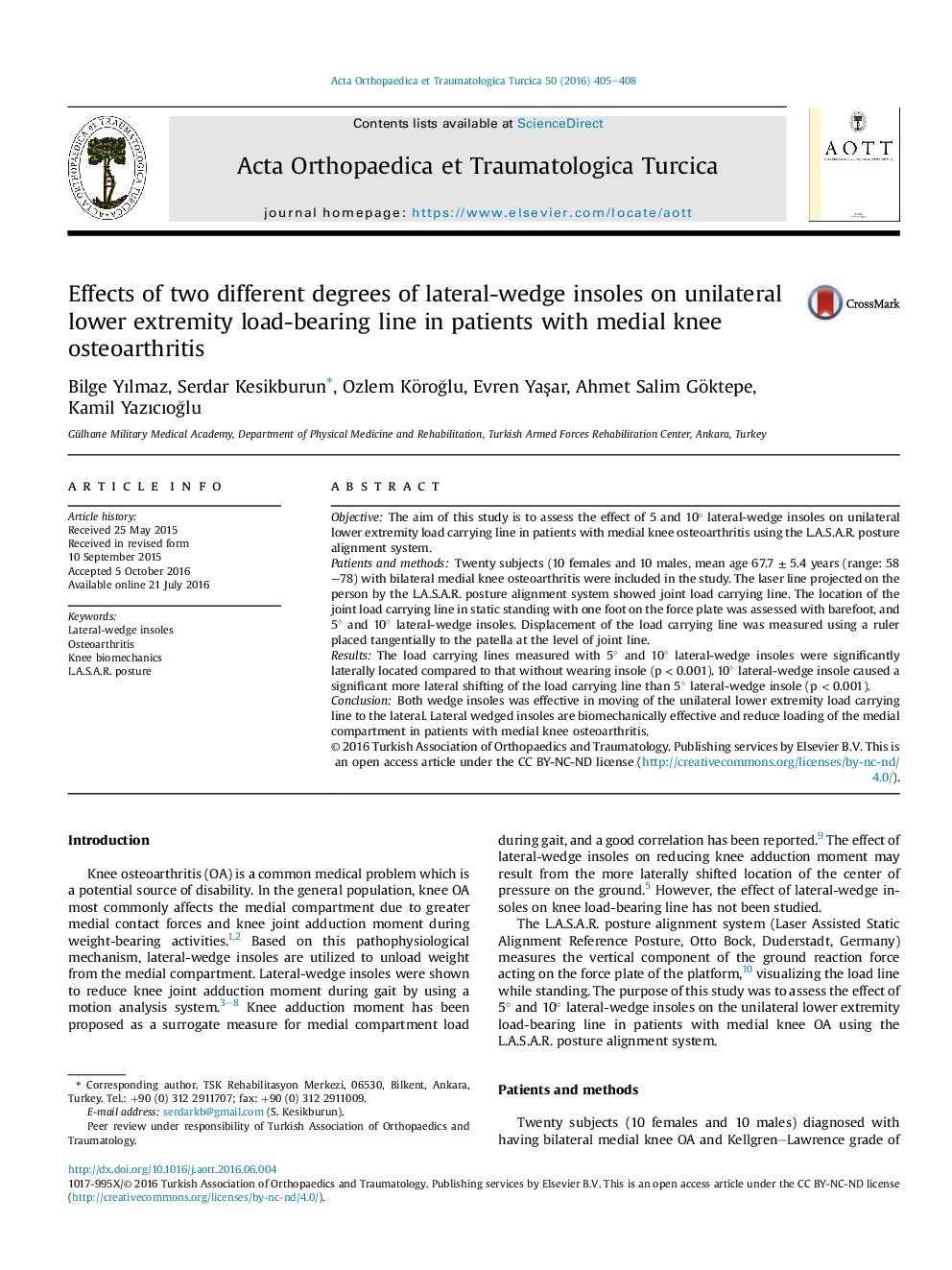| Article ID | Journal | Published Year | Pages | File Type |
|---|---|---|---|---|
| 4040008 | Acta Orthopaedica et Traumatologica Turcica | 2016 | 4 Pages |
ObjectiveThe aim of this study is to assess the effect of 5 and 10° lateral-wedge insoles on unilateral lower extremity load carrying line in patients with medial knee osteoarthritis using the L.A.S.A.R. posture alignment system.Patients and methodsTwenty subjects (10 females and 10 males, mean age 67.7 ± 5.4 years (range: 58–78) with bilateral medial knee osteoarthritis were included in the study. The laser line projected on the person by the L.A.S.A.R. posture alignment system showed joint load carrying line. The location of the joint load carrying line in static standing with one foot on the force plate was assessed with barefoot, and 5° and 10° lateral-wedge insoles. Displacement of the load carrying line was measured using a ruler placed tangentially to the patella at the level of joint line.ResultsThe load carrying lines measured with 5° and 10° lateral-wedge insoles were significantly laterally located compared to that without wearing insole (p < 0.001). 10° lateral-wedge insole caused a significant more lateral shifting of the load carrying line than 5° lateral-wedge insole (p < 0.001).ConclusionBoth wedge insoles was effective in moving of the unilateral lower extremity load carrying line to the lateral. Lateral wedged insoles are biomechanically effective and reduce loading of the medial compartment in patients with medial knee osteoarthritis.
